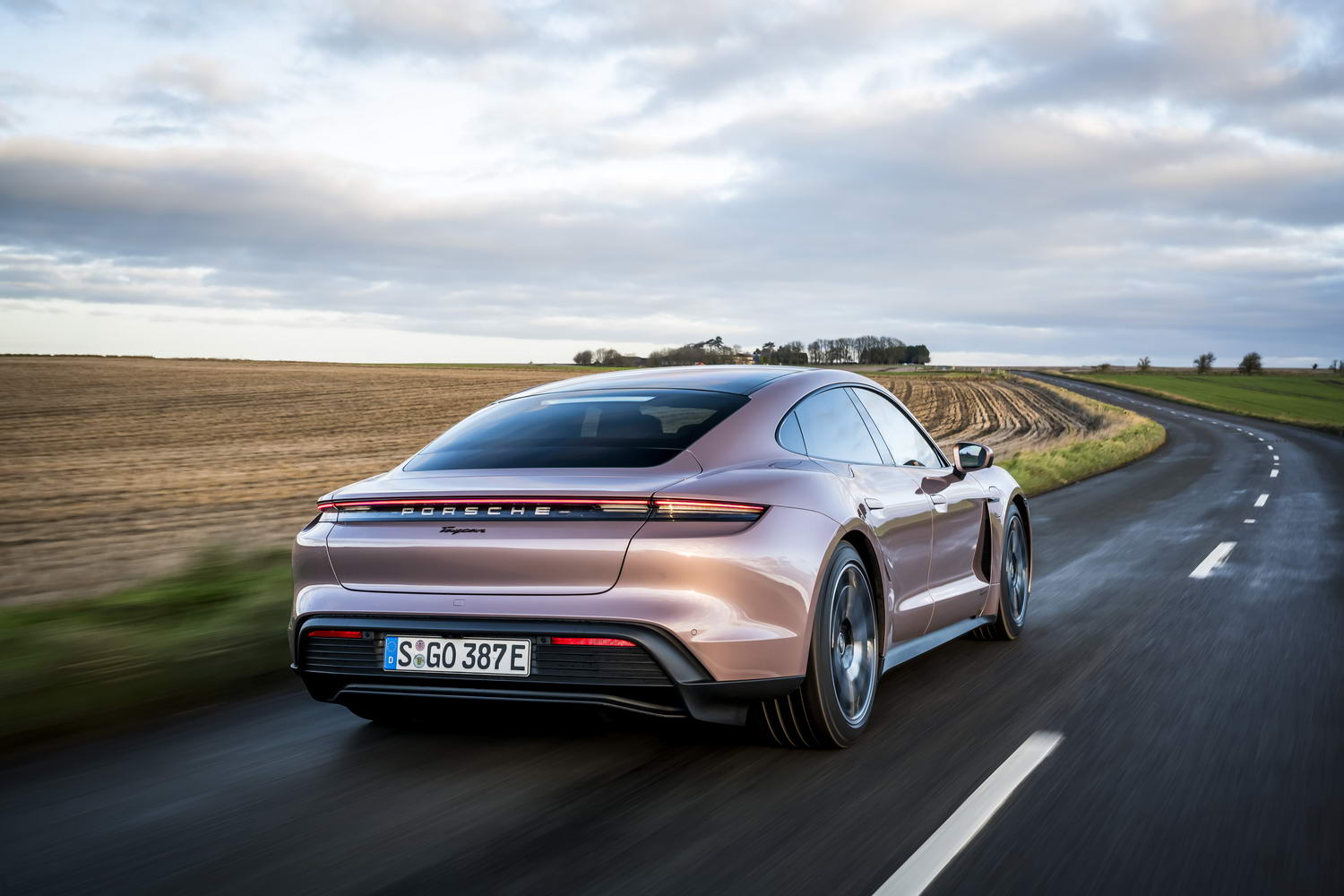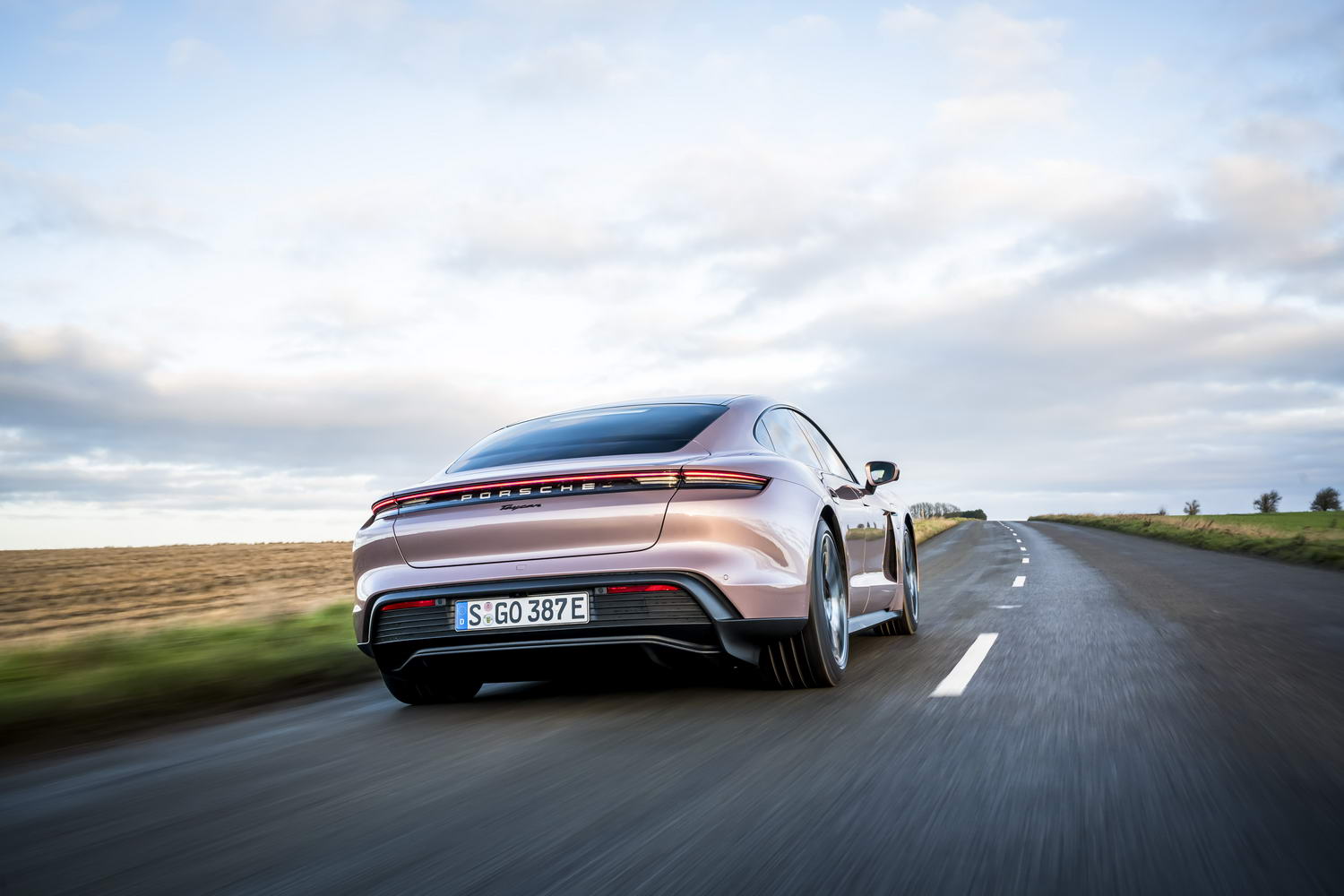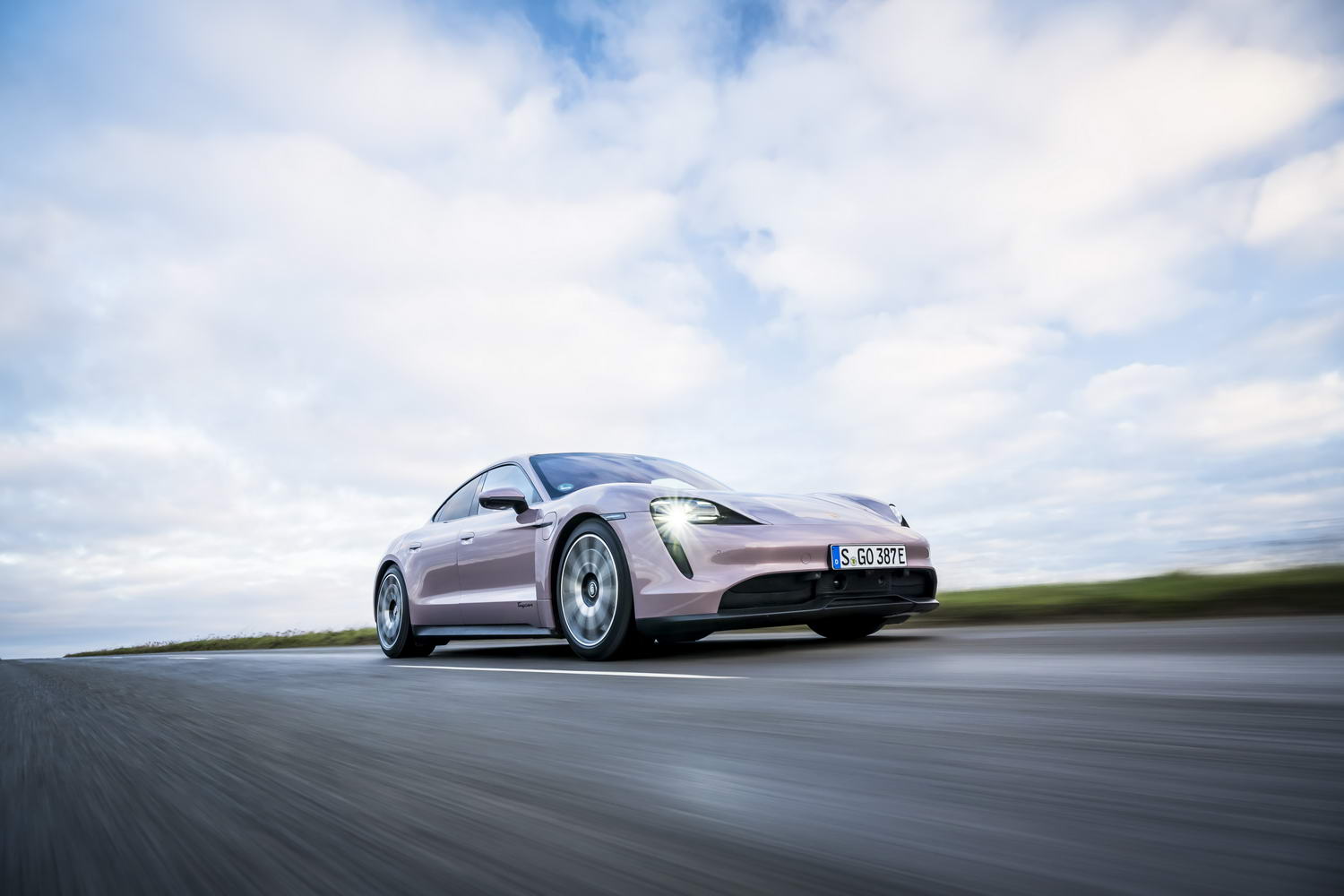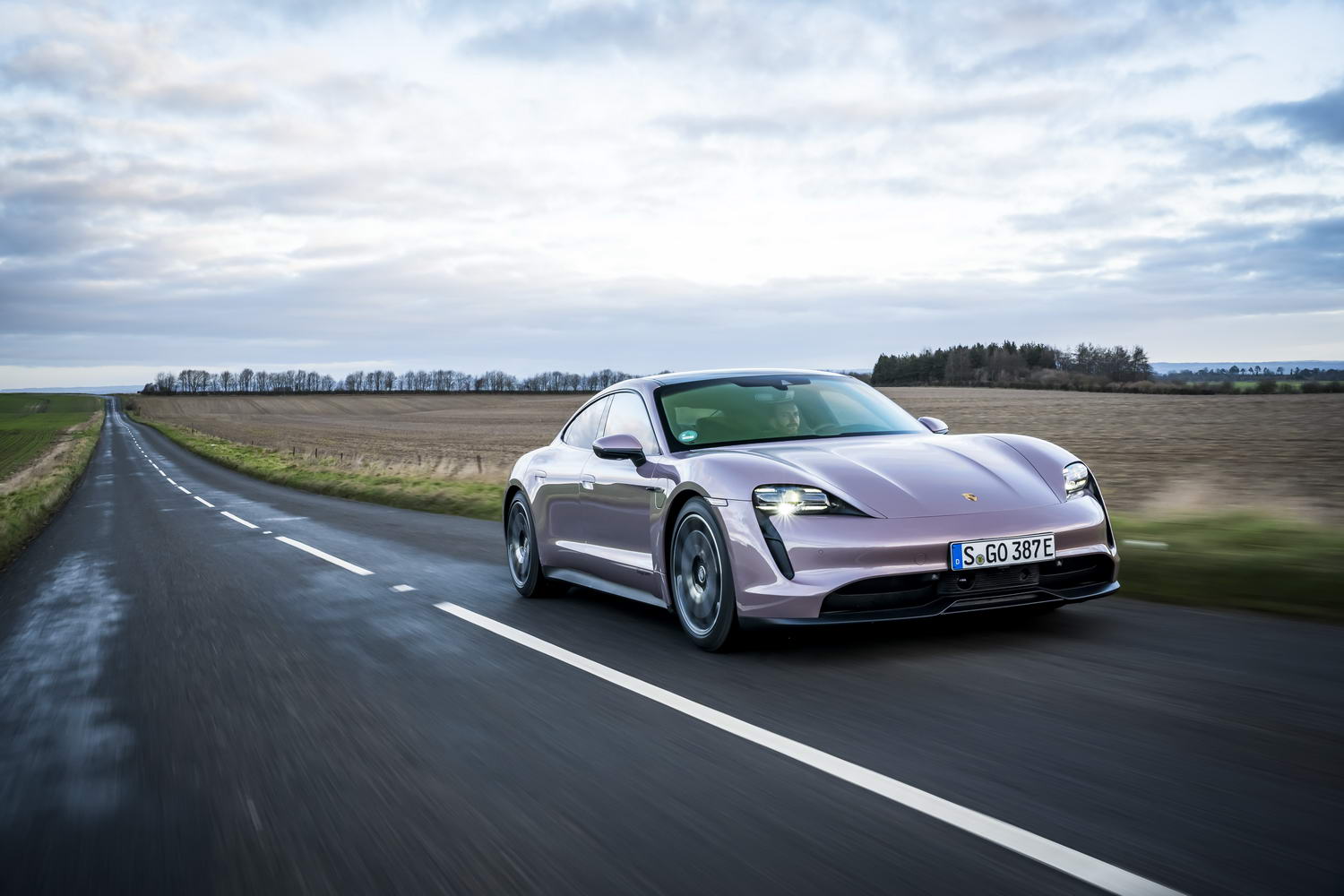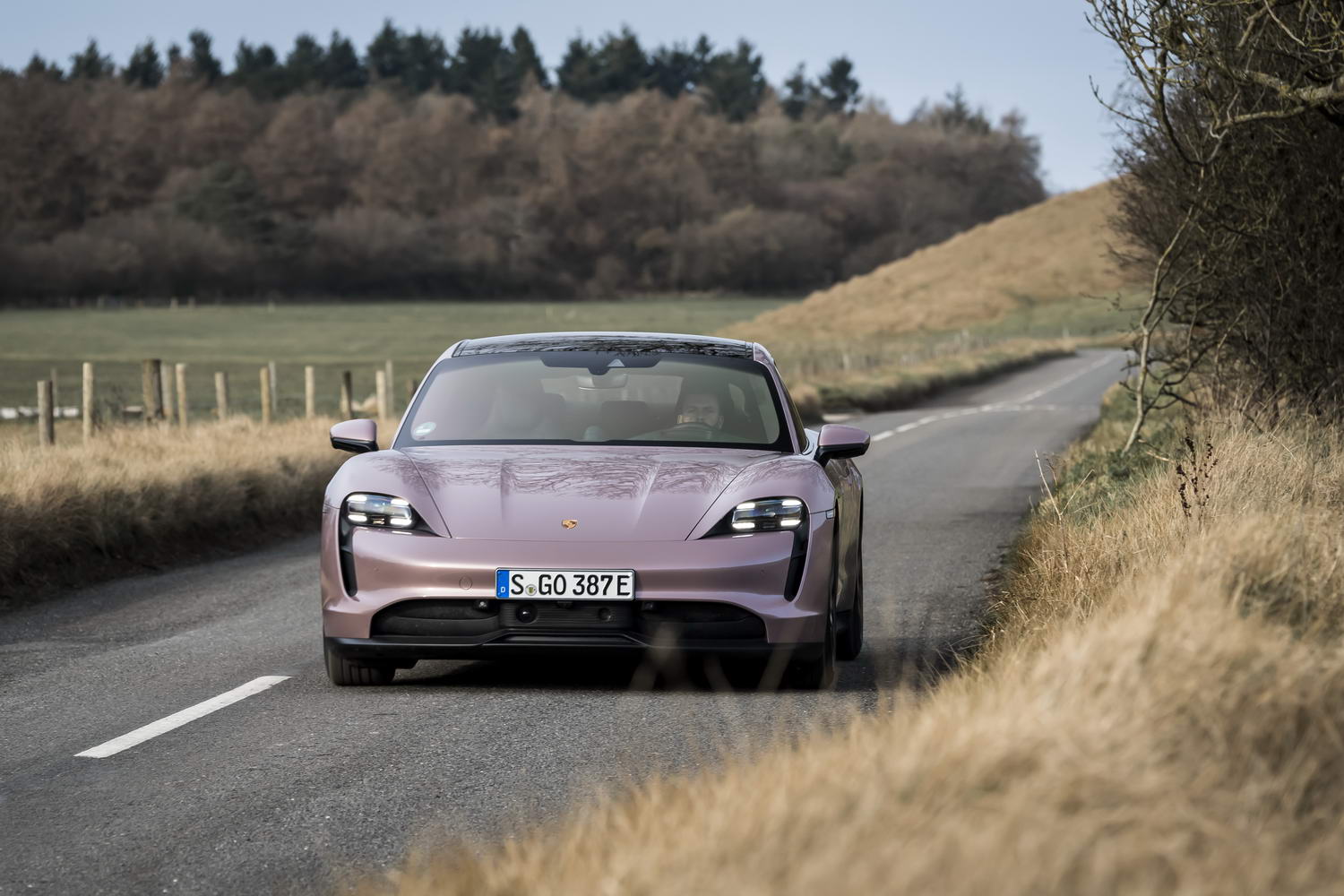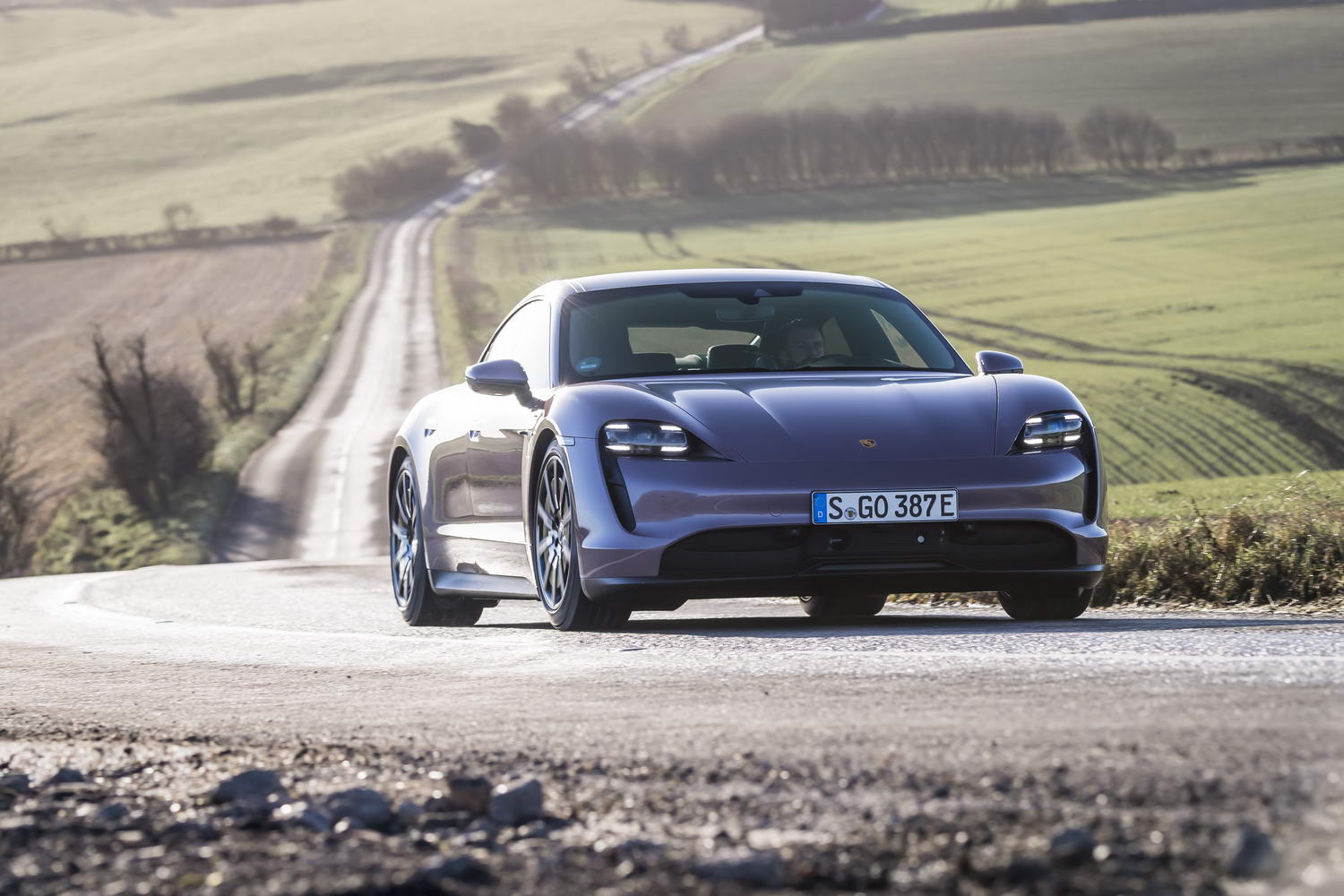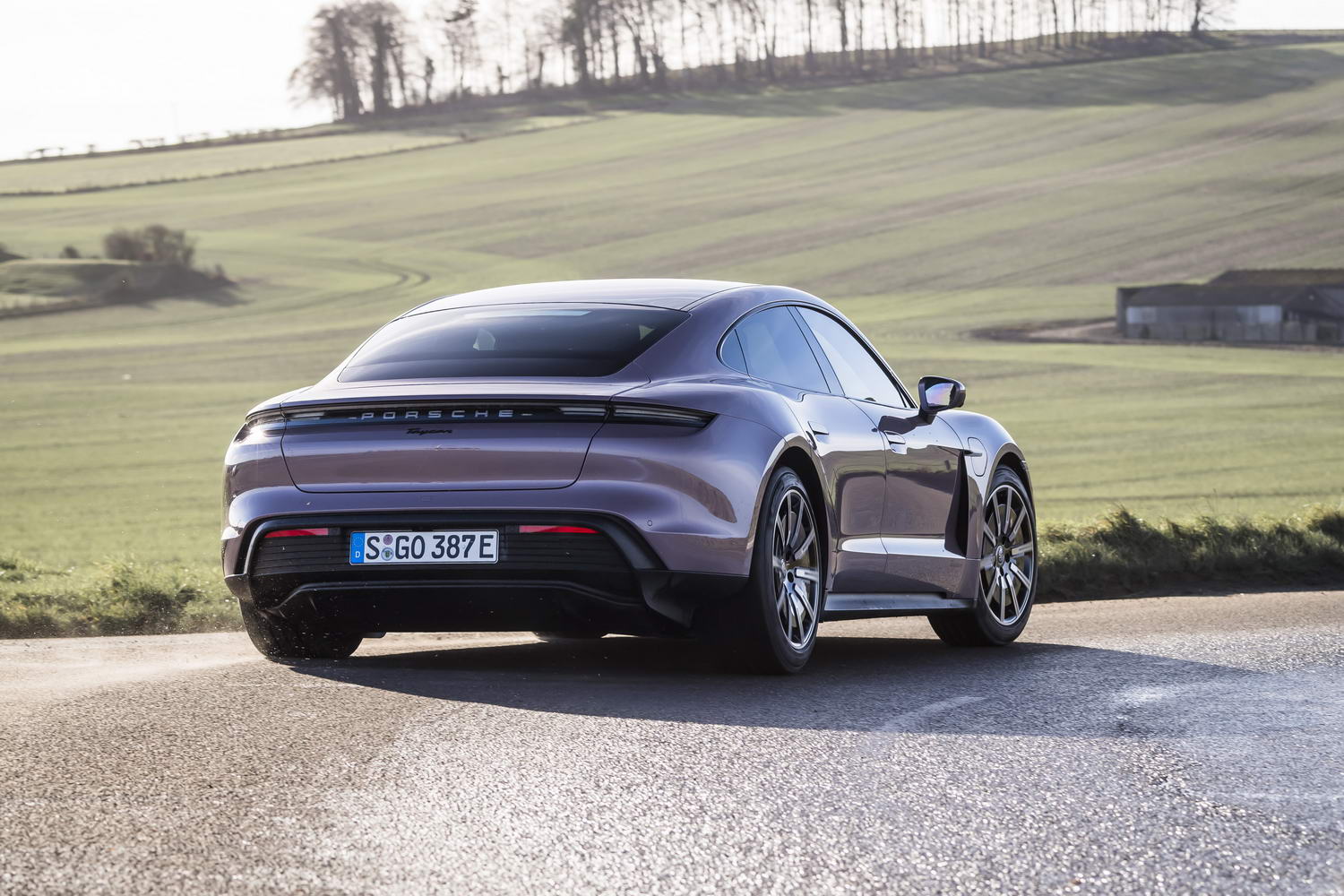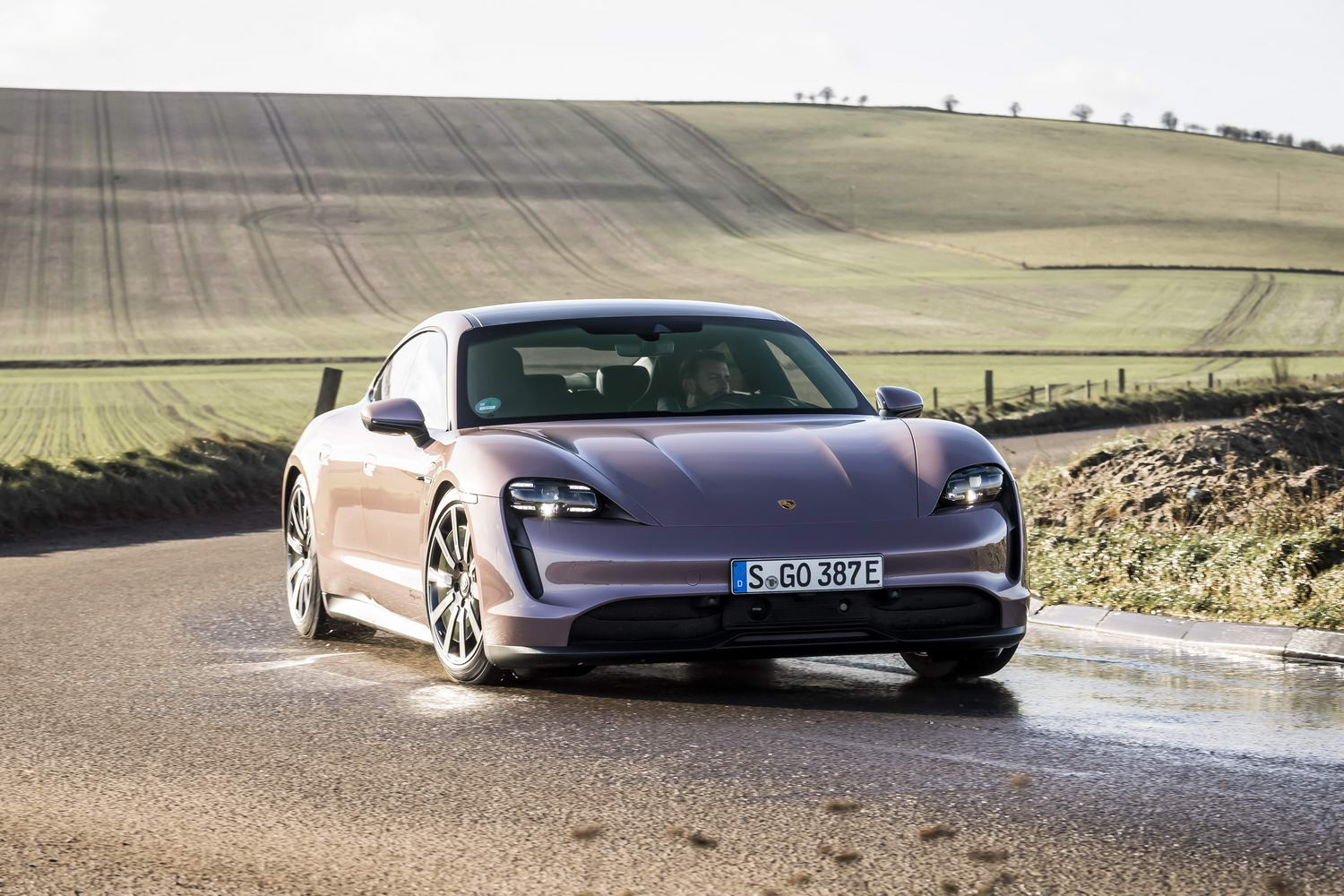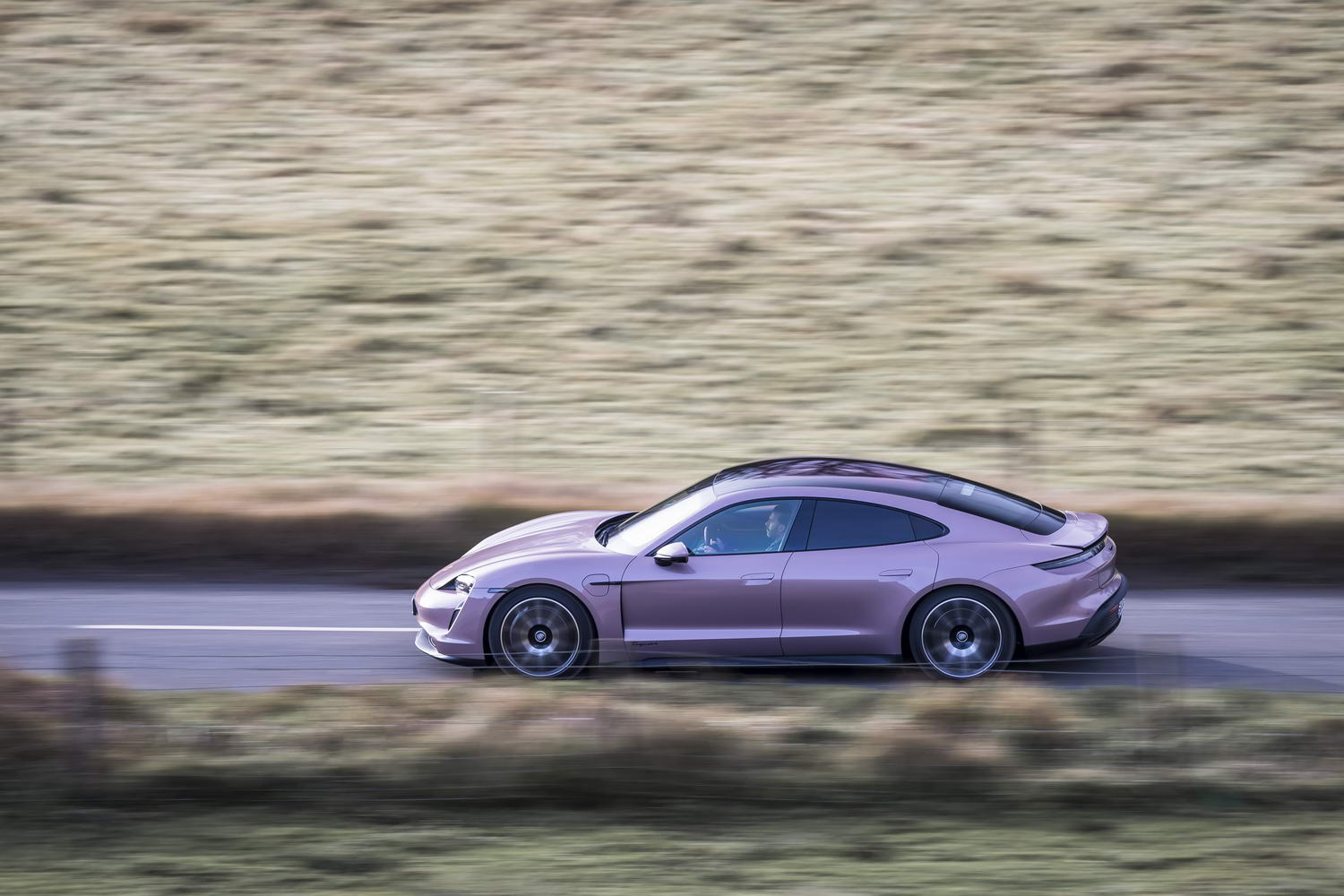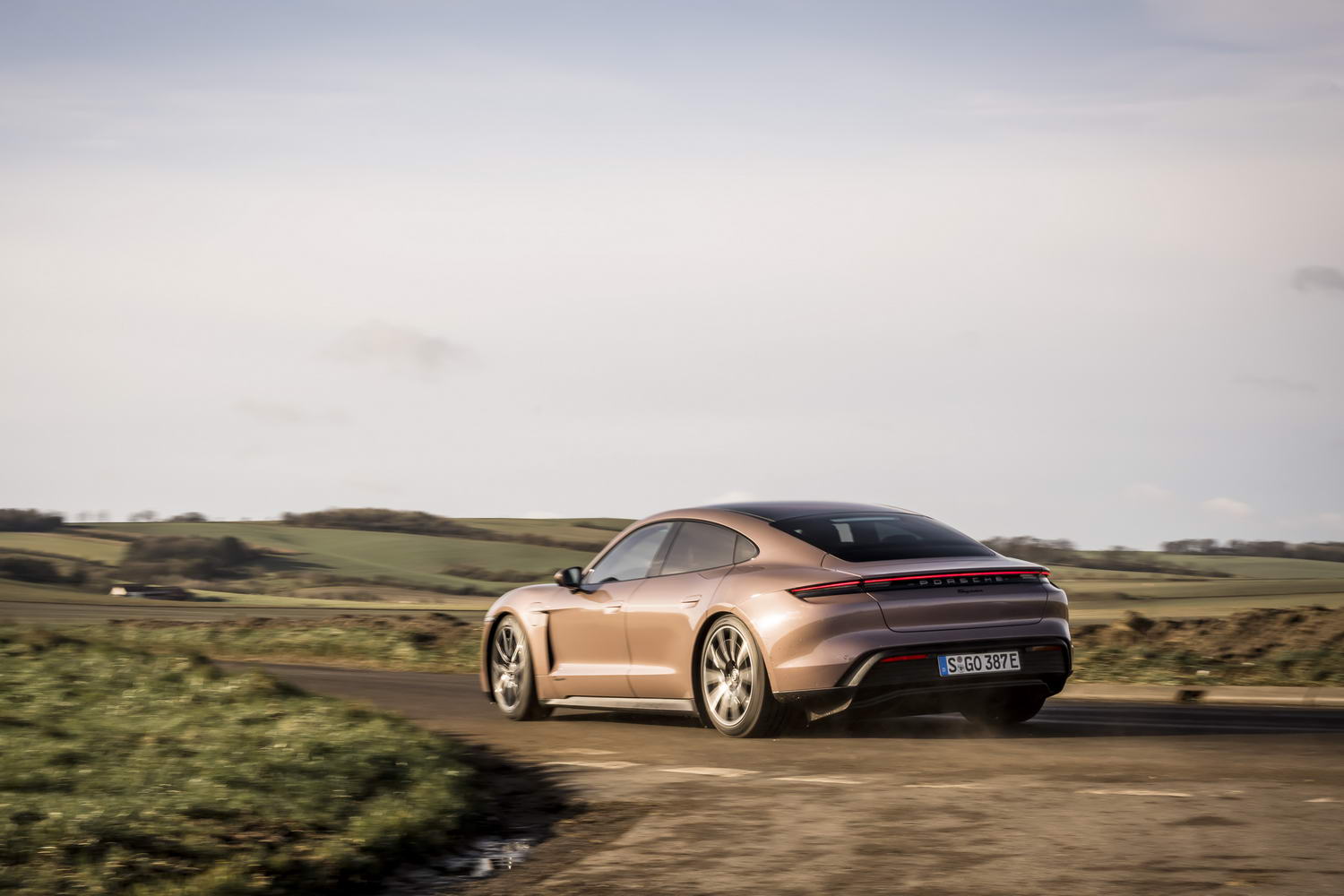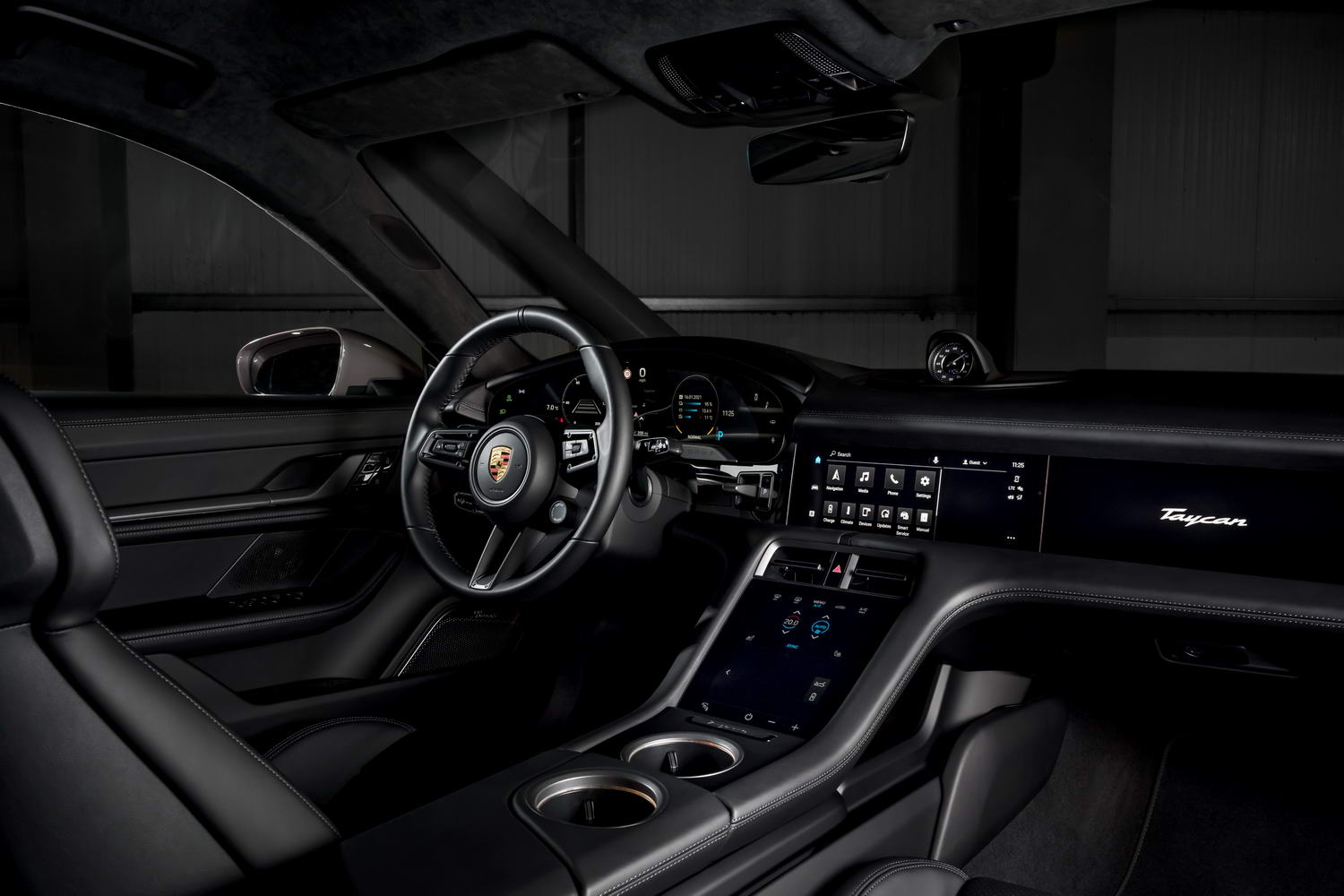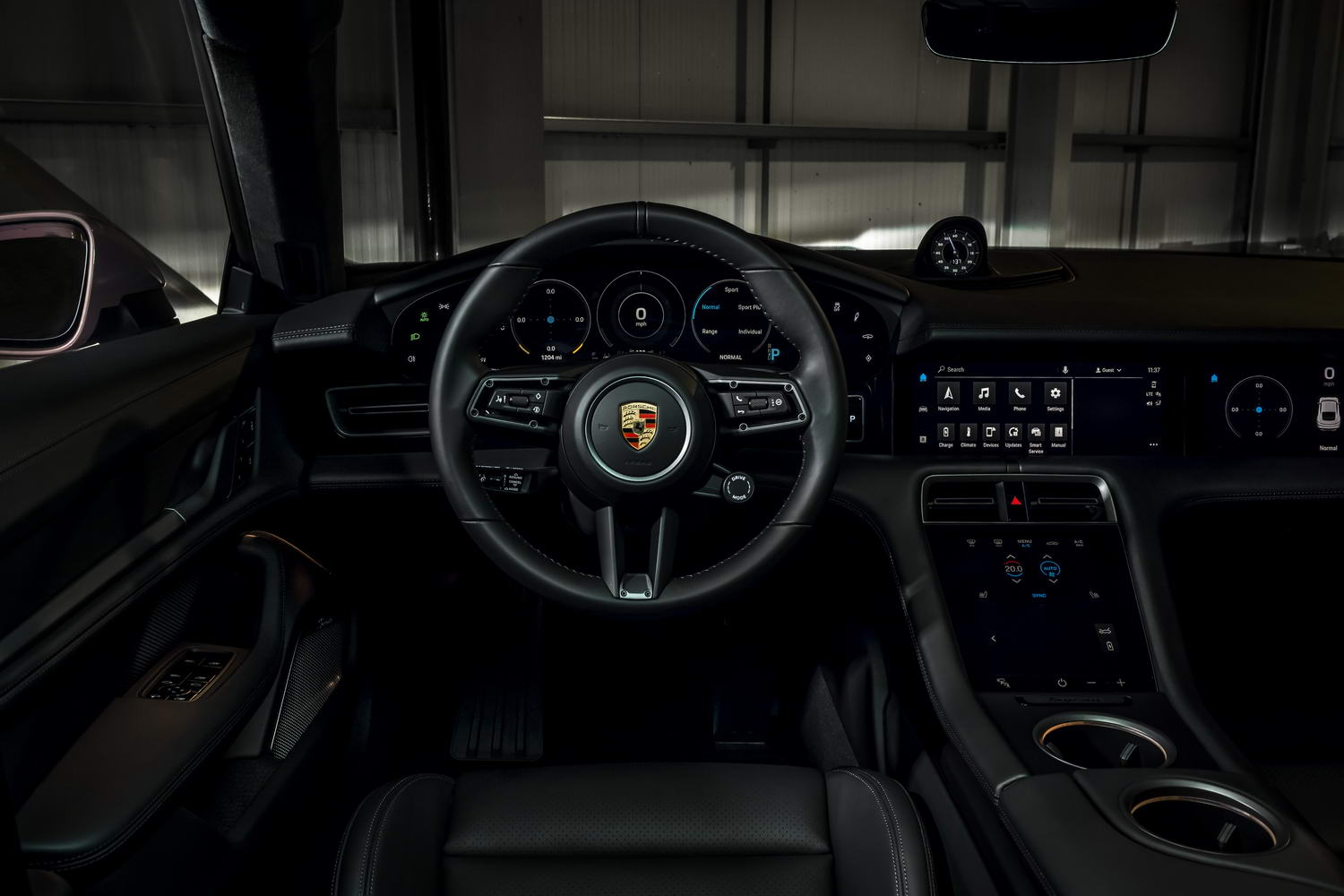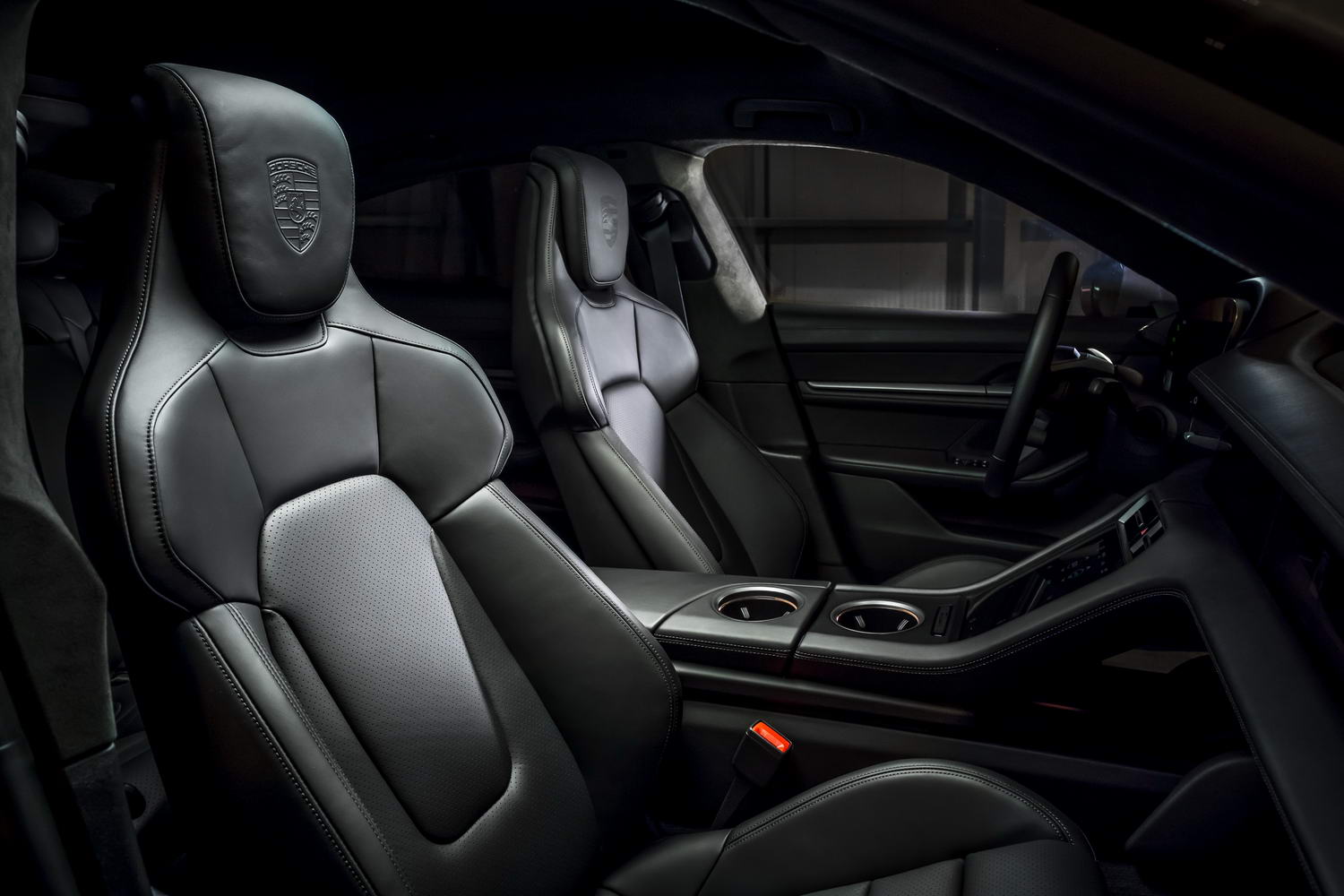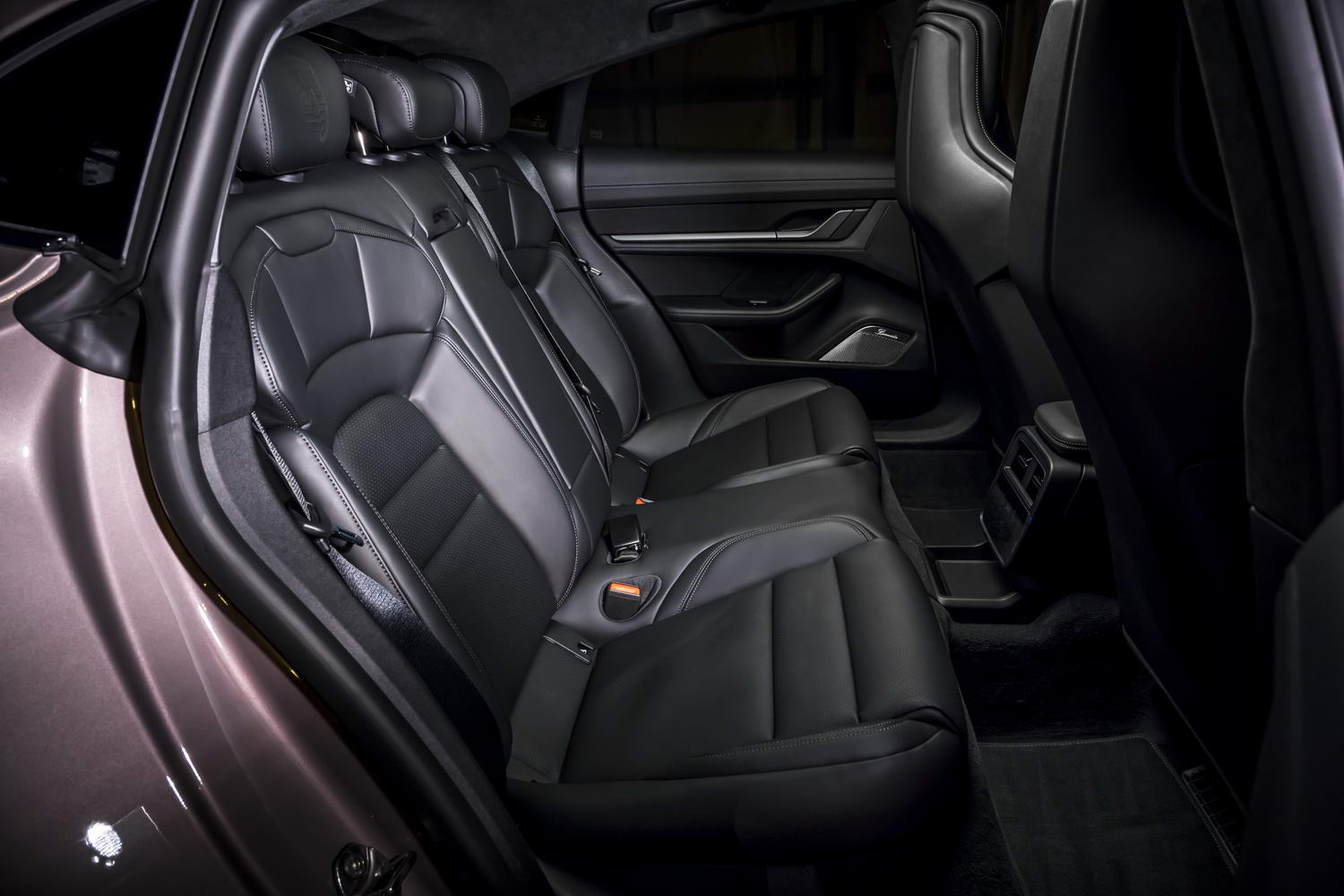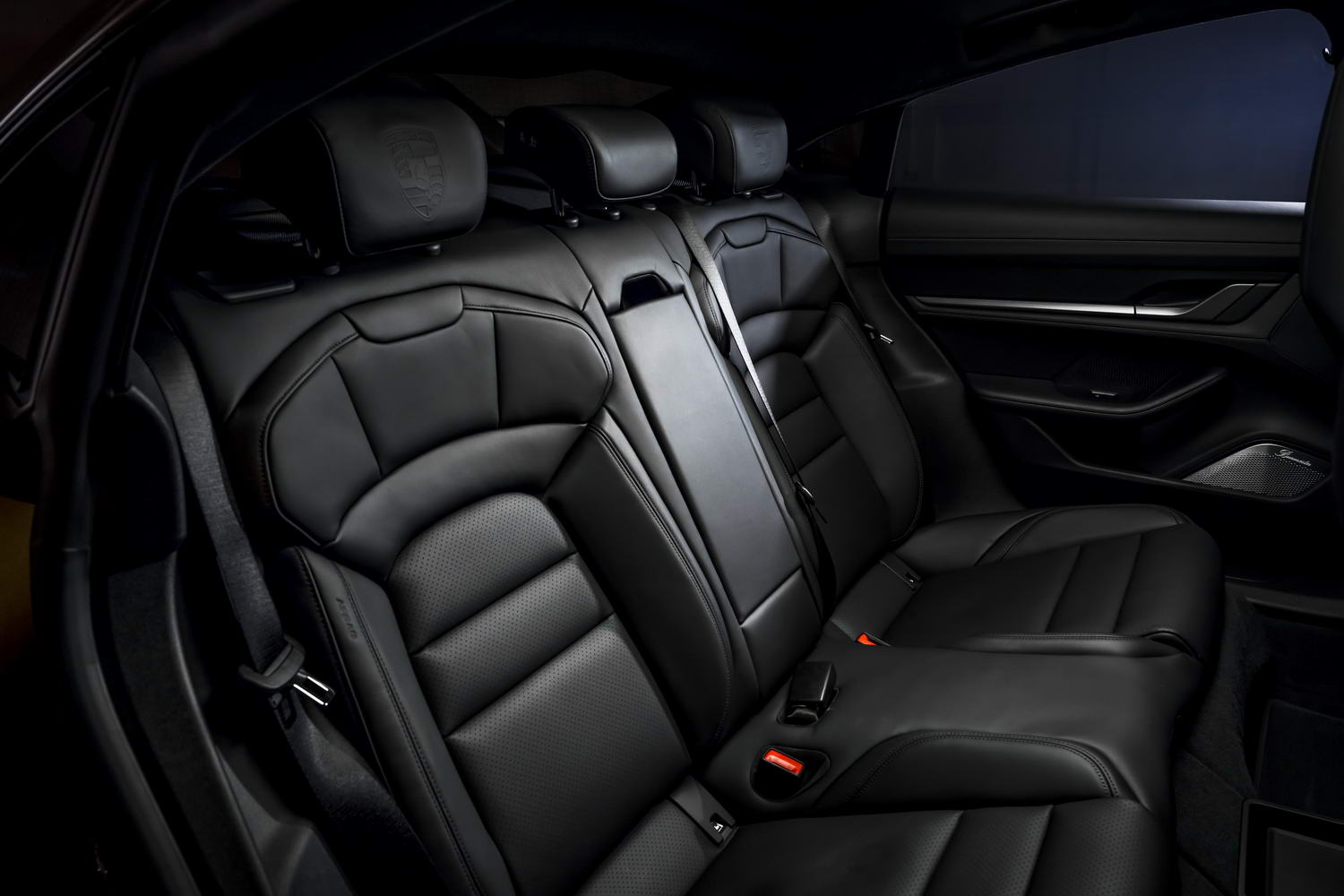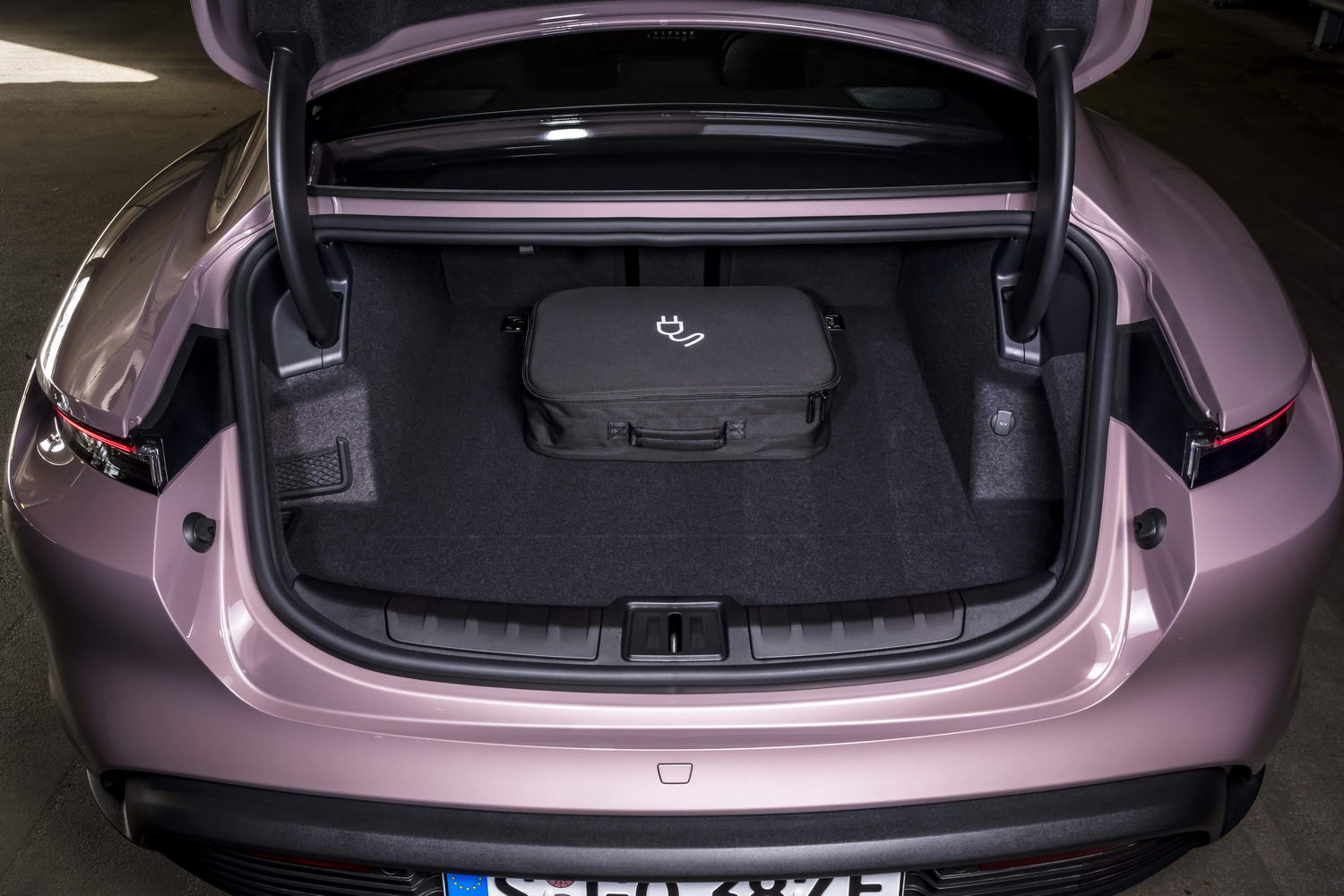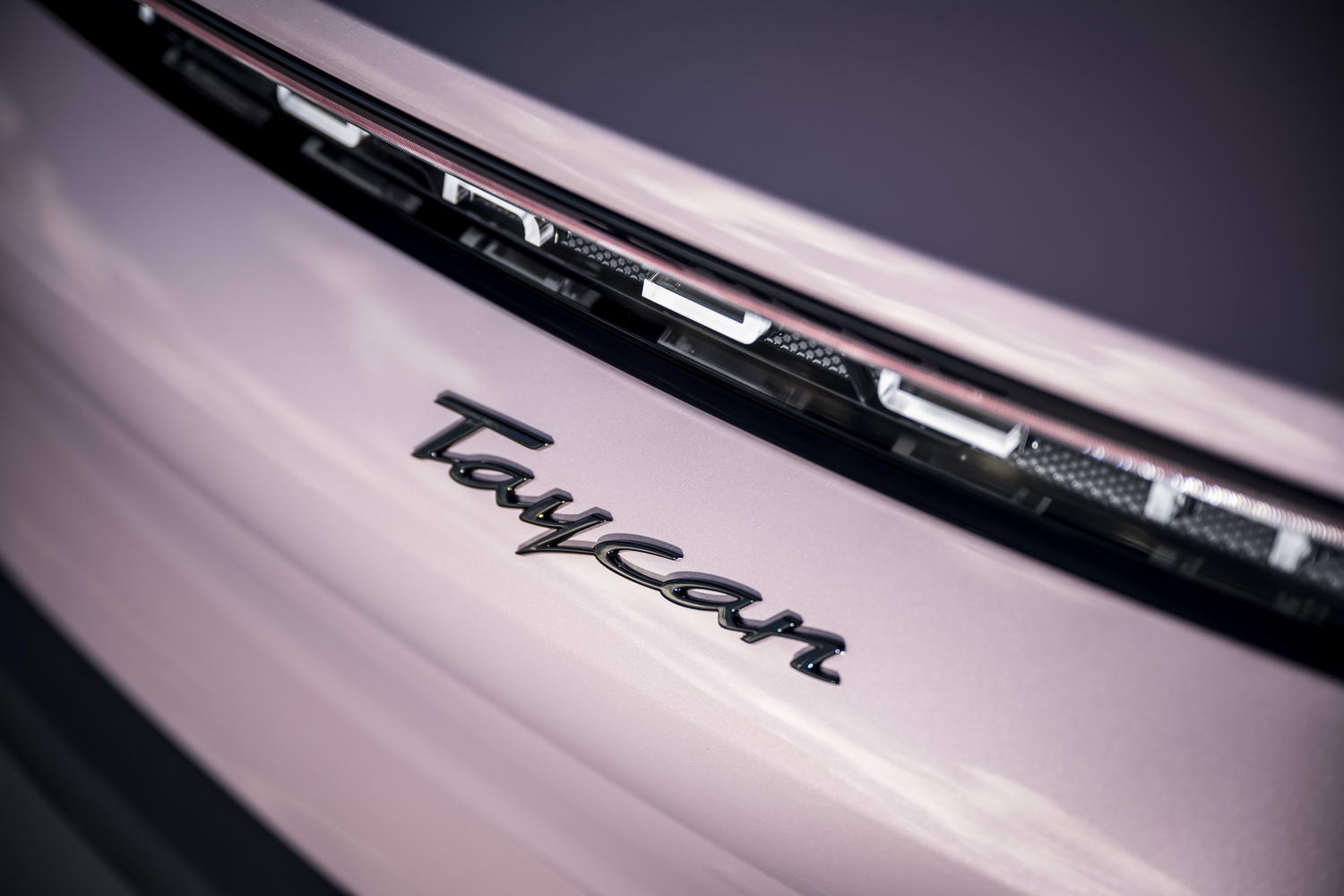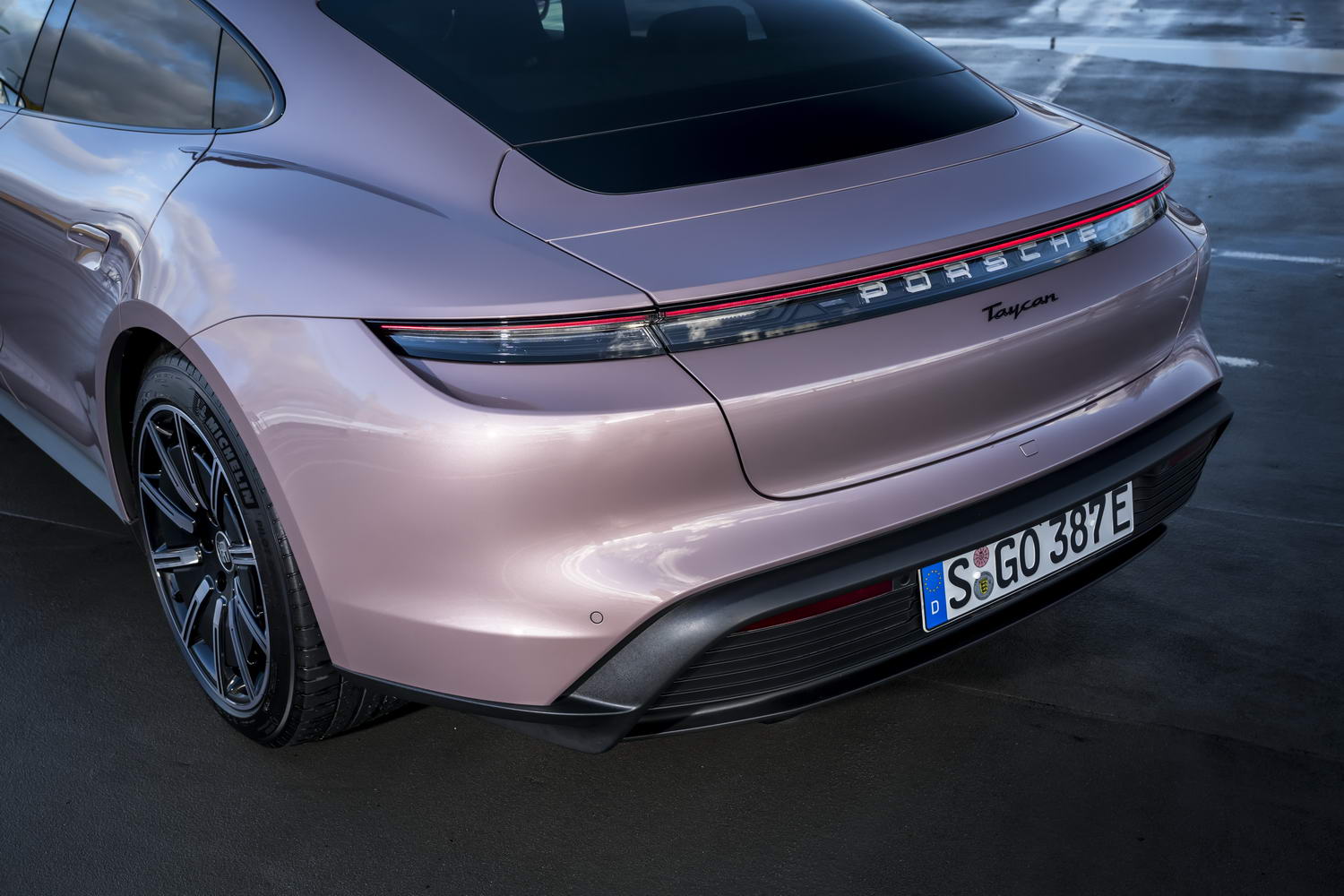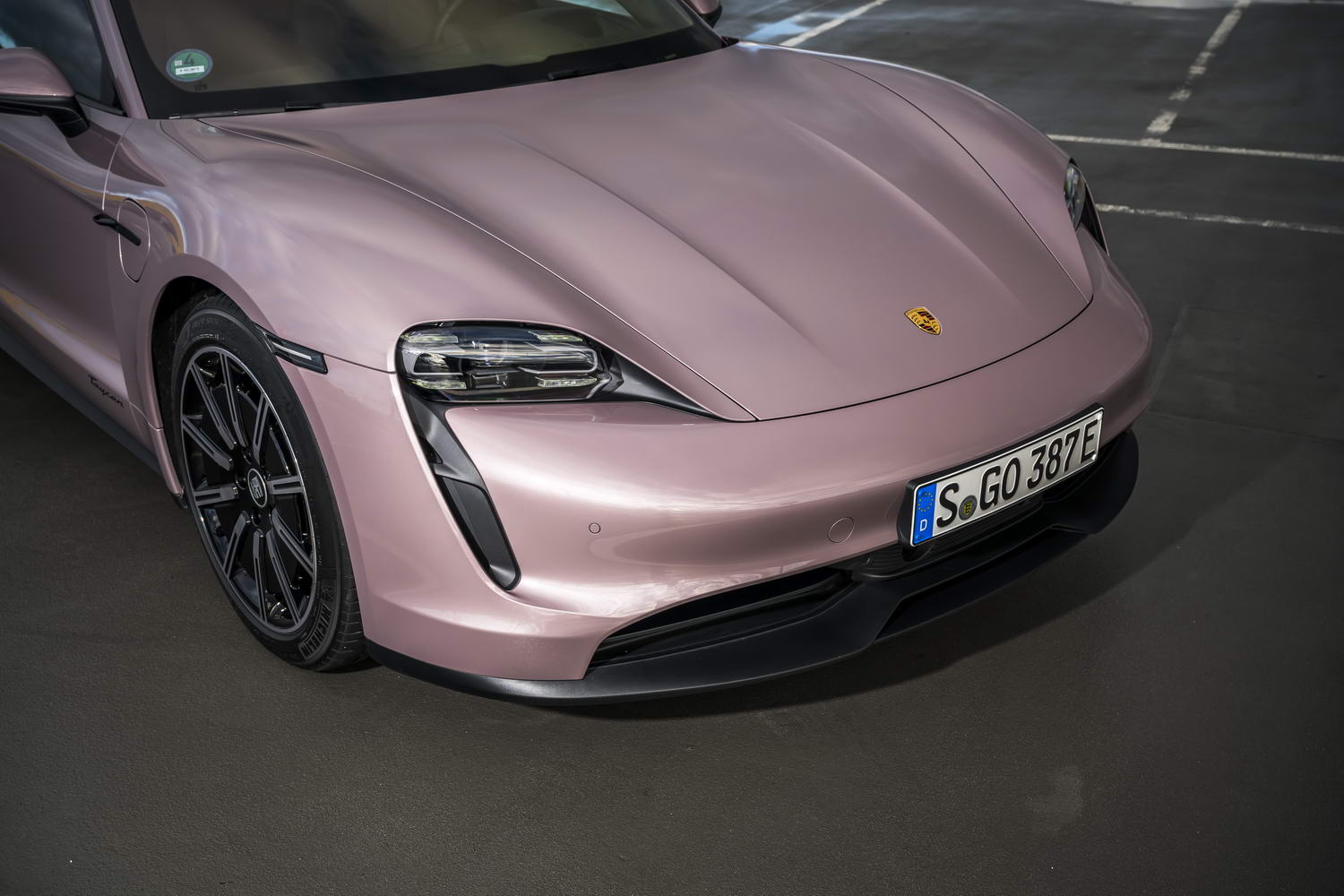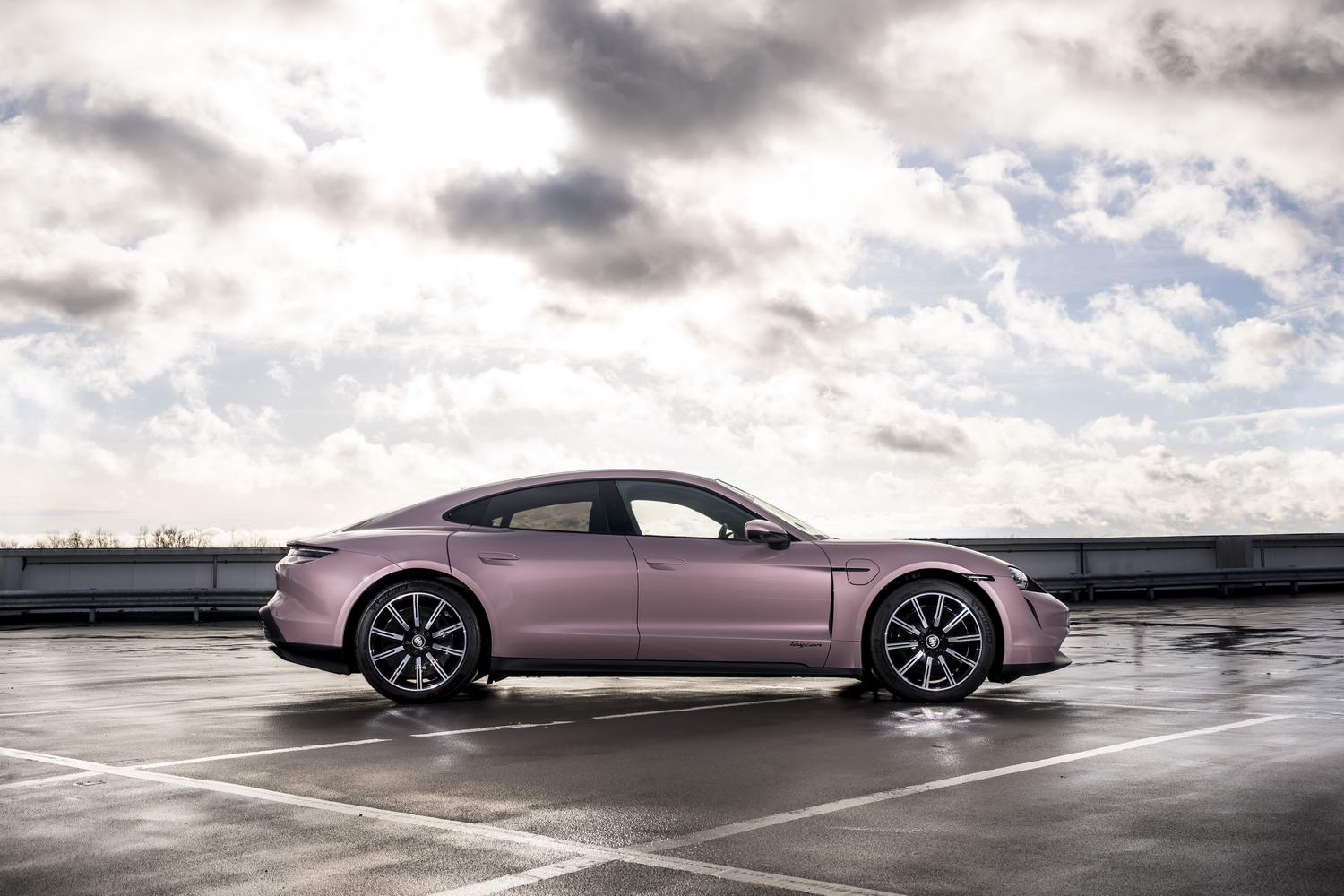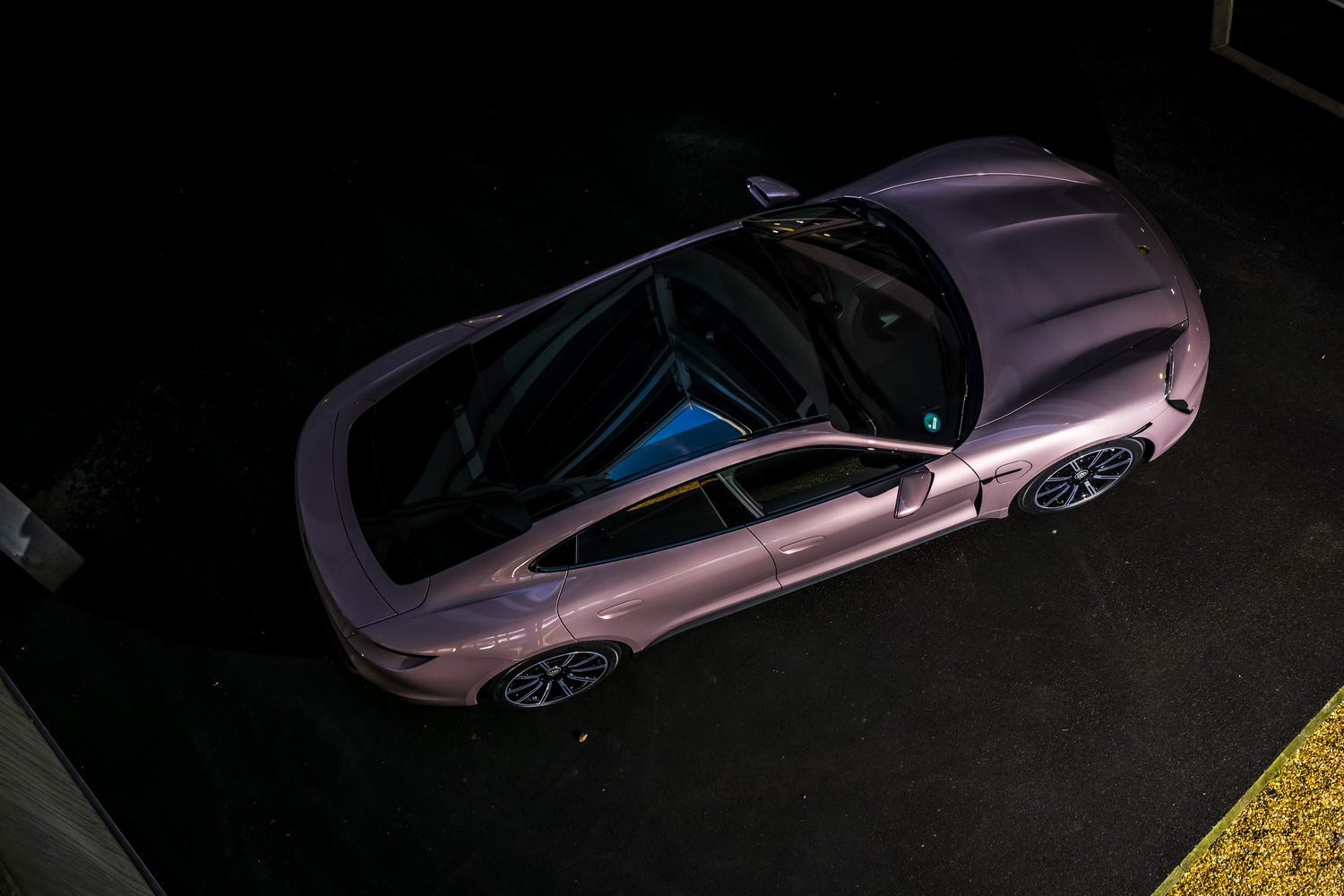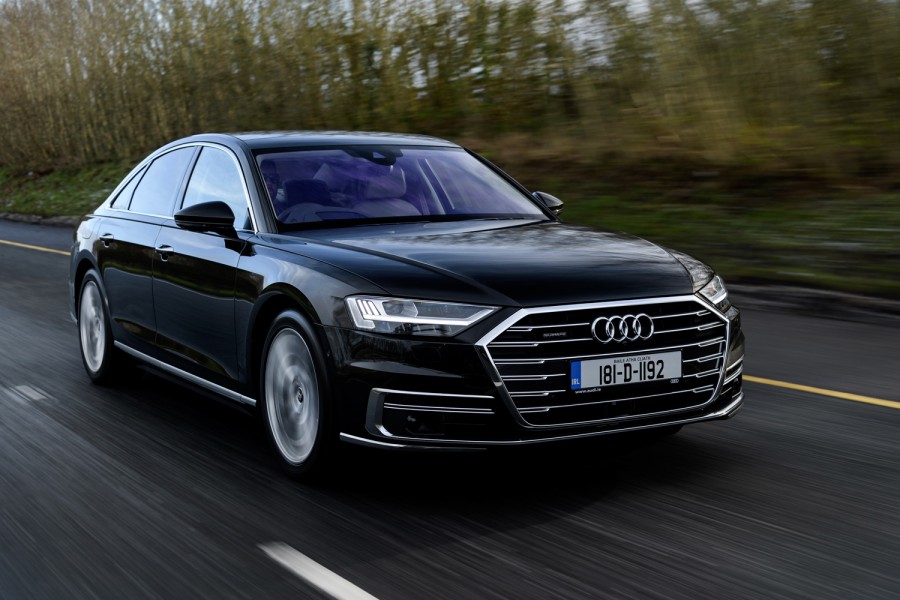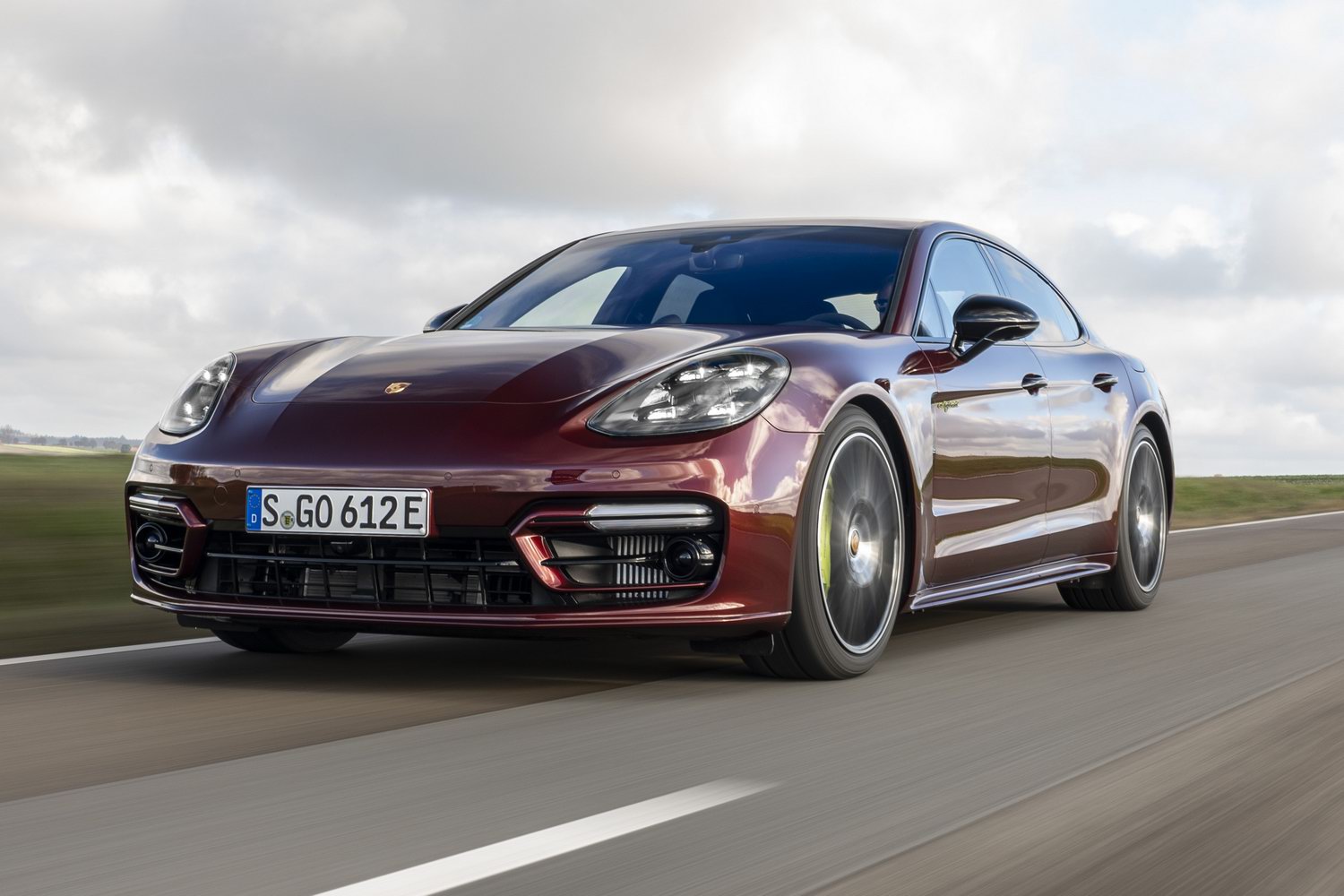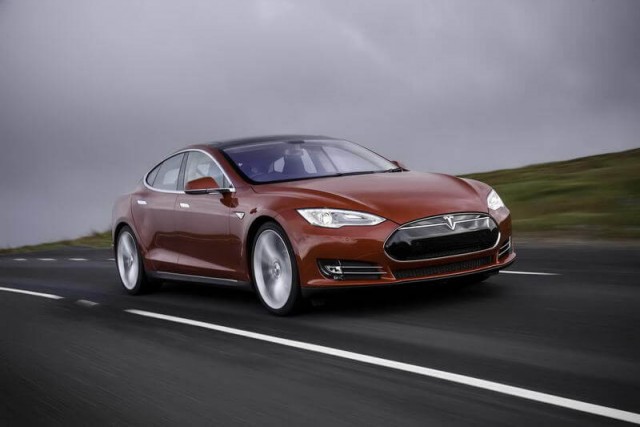Porsche expands its growing - and excellent - Taycan electric vehicle (EV) line with a new model, which is just called 'Taycan'. This one is the first single-motor version, which also means it's rear-wheel drive - and, specified correctly, it'll also offer a greater single-charge range than any of its stablemates. Is it the Taycan to choose first and foremost as a result?
In the metal
Visually, either inside or out, you won't easily spot the new rear-wheel-drive (RWD) Porsche Taycan. The German company has gone to great lengths to make sure that customers of the base-spec car will not feel aesthetically short-changed. In fact, the Taycan looks almost identical to the twin-motor Taycan 4S, with a black rear diffuser, side sills and front bumper area being the main differentiating features on these cars to the Turbo and Turbo S models (which are more colour-coded all over). If an owner doesn't specify any options whatsoever (see 'What you get for your Money', below), then the single-motor Taycan comes on 19-inch aerodynamically optimised alloys that are the same design as those on the 4S, but which are all silver instead of being bicolour as they are on the latter model, and it has black brake callipers. The 4S gains red callipers and, for those Porsche spotters out there and their notepads, the Turbo has white callipers as it gets the Porsche Surface Coated Brake (PSCB) as standard, while the Turbo S has the Porsche Ceramic Composite Brake system with its tell-tale yellow callipers. The Turbo and the Turbo S also roll on 20- and 21-inch alloys from the off.
Same story in the cabin, where even the base car has the 16.8-inch Curved Display instrument cluster, the 10.9-inch Porsche Communication Management (PCM) touchscreen infotainment system with navigation and wireless Apple CarPlay support (sorry, Android fans, you're not covered with Android Auto), and also the haptic display for the climate controls down on the transmission tunnel. In short, the ambience inside is every bit as nice in any other Taycan, even though it only has a part-leather cabin instead of full hide. Good news for vegans, though - the Taycan model line is the first one in Porsche's portfolio to offer a completely leather-free passenger compartment if you are willing to pay for it.
What this particular Taycan offers is more EV range than any of its brethren. It is running the same rear motor and attendant twin-speed reduction-gear automatic transmission as the 4S, but the front motor and its single-speed gearbox are both removed. Like the 4S, there are two power-supply options, the regular 79.2kWh Performance Battery car or, for another €5,337, the 93.4kWh Performance Battery Plus. The former offers up peak outputs of 408hp and 345Nm, as well as a maximum charging rate of 225kW and a theoretical cruising range of 431km, but the latter - employing the same battery pack as the Turbo and Turbo S Taycans - increases the same metrics to 476hp, 357Nm, 270kW and 484km, that last number making it the Taycan model of all six available right now that has the most single-charge range. Incidentally, the Taycan's maximum horsepower numbers are only available in an 'overboost' phase during Launch Control; otherwise, they deliver 326- or 380hp, respectively.
Driving it
Much of what makes the Porsche Taycan so special is preserved with the removal of one motor and gearbox, although - if we can once again draw your attention to the section below - it should be borne in mind that the car offered to us for evaluation had a lot of chassis-sharpening kit on it: things like air suspension (€2,013), Porsche Torque Vectoring Plus (PTV Plus, €1,386), the PSCB brakes (€2,775) and 20-inch Sport Aero wheels and tyres (€2,341), for instance. So, at the moment, we're not quite sure what a plain-and-simple RWD Taycan Performance Battery costing less than 90 grand will feel like.
However, Porsche doesn't often deliver up dynamic duffers, no matter what form of propulsion they're employing, and while the Taycan RWD comes on steel springs as standard, it does get Porsche 4D Chassis Control and Porsche Active Suspension Management (PASM) adjustable dampers. That means the car can't lower itself 22mm in Range mode to make its body cut through the air even more efficiently, although - again - in mitigation, it does have the same Porsche Active Aerodynamics as any other Taycan variant.
It's also the lightest Taycan of all, clocking 2,050kg with the Performance Battery and 2,150kg with the Performance Battery Plus. That allows it to get up to all sorts of RWD-based antics, as this particular world record proves, and you do feel more of a sense of squirm and movement from the rear of the car when you're driving it quickly on technical roads. Its steering is nice and pure, too, with good weighting and plenty of feel, but we'd say that's true of every Taycan; it's not as if its RWD nature suddenly turns this Porsche into the driving enthusiast's zero-emissions choice.
In short, it still feels very fast, picking up with that instantaneous whoosh on motorways if you plant the accelerator pedal, and it can also step off ridiculously smartly from the line if you ask it to. It's incredibly hushed and refined on the move, whispering along at 100km/h and more as if the outside world and all its current travails were nothing but a distant, troubling memory (if only). Grip levels are good, traction is still excellent (even in cold and icy conditions - more on that in a second) and, in general, the Taycan RWD feels like one of the best large sports saloons you could wish to find. That counts for EVs or otherwise, even if it is, understandably, not quite as jaw-dropping or intoxicating to drive as the quietly thunderous Turbo or Turbo S models.
So, we mentioned the cold. The day we drove the Taycan RWD, snow was lying over much of the scenery and the car's temperature gauge spent the whole time hovering around freezing. This promised to test its two-wheel traction - and it did, because later in the route there was a steep hill tha the Taycan RWD couldn't get up, although to be fair nothing short of a Unimog would have clambered up that ski-slope-esque incline. The low temperature also challenged those range claims, as EVs are not as capable in colder weather. Their batteries don't like the drop in ambient temperature and you also, as the car's occupant, tend to use more of the things that place an electrical drain on the vehicle's resources to boot.
So it proved in the Taycan RWD. With 99 per cent of its battery capacity, it began the test showing a maximum range of 340km, not 484km, and it then did 267km at 26.5kWh/100km, mainly because we a) didn't drive it very sensibly and in an eco-conscious fashion at all, in some places, and b) we had the seat heaters and the climate control running constantly in an effort to keep the biting cold outside at bay. To be fair, with 17 per cent of its battery remaining at the end of the test-drive, it was still showing another 63km was possible on its reserves - so its trip computer was being candid at the start, as it covered a theoretical real-world 330km in such inhospitable conditions. Factor in that our test vehicle was very new with low mileage on the clock and we have no reason to doubt the Porsche Taycan should be capable of 450km or thereabouts in warmer weather, especially as lithium-ion battery packs tend to 'loosen' up a touch as they bed in through operation.
What you get for your money
In principle, the RWD Taycan should gain a higher mark in this section, as it is the most affordable new model of the EV in this country and the only one with a five-figure starting price at €88,498 - to step up into the visually similar but twin-motor Taycan 4S requires increasing your minimum expenditure to €104,634. Also, it's not as if the latest Taycan has a kit list that skimps on the goodies: as standard, you'll get Porsche 4D Chassis Control (PDCC), PASM, 19-inch alloys, LED headlights and four-point daytime running lights, dual-zone climate control, eight-way electrically adjustable seats in the front with heating capability, Lane Keep Assist, Traffic Sign Recognition, cruise control, Collision and Brake Assist, front and rear ParkAssist, keyless go, a multifunction leather sports steering wheel, part-leather trim, a 150-watt, ten-speaker sound system, two charging cables for the battery pack, four USB-C sockets, eight airbags and two child seat ISOFIX points.
However, as our test car proved, despite the generosity of the standard equipment roster, it's possible to add a staggering €50,497 to the list price of the basic Taycan - and that was by no means an exhaustive box-ticking exercise, either, so you could potentially go even further into financial meltdown at ordering time. At €89,000, the RWD Taycan is very impressive, but at €138,995, it rather begs the question of why you just wouldn't buy a Taycan Turbo (from €145,045) in the first place and be done with.
In terms of charging the battery back up, it takes 22.5 minutes for a 5-80 per cent battery charge on either battery's maximum connection speed, 4.75-5.25 minutes for 100km of range on either battery's maximum connection speed, 26-30 minutes for 100km of range on a 50kW DC public connection, or 8-9 hours for 0-100 per cent on 11kW AC connection.
Summary
Almost all of the Porsche Taycan's planet-saving goodness mixed with stunning German chassis precision is preserved by the rear-drive, single-motor version, so it's another cracking addition to the electric canon. Owners need to be careful not to go wild with the options, otherwise this most affordable of Porsche EVs could end up not being affordable at all, but if what you want from your Taycan is more real-world range on a single charge than any other model, this is definitely the version to go for. It's another superb electric car from a company that's making the transition from internal combustion to zero-emissions in the most splendid style imaginable.

